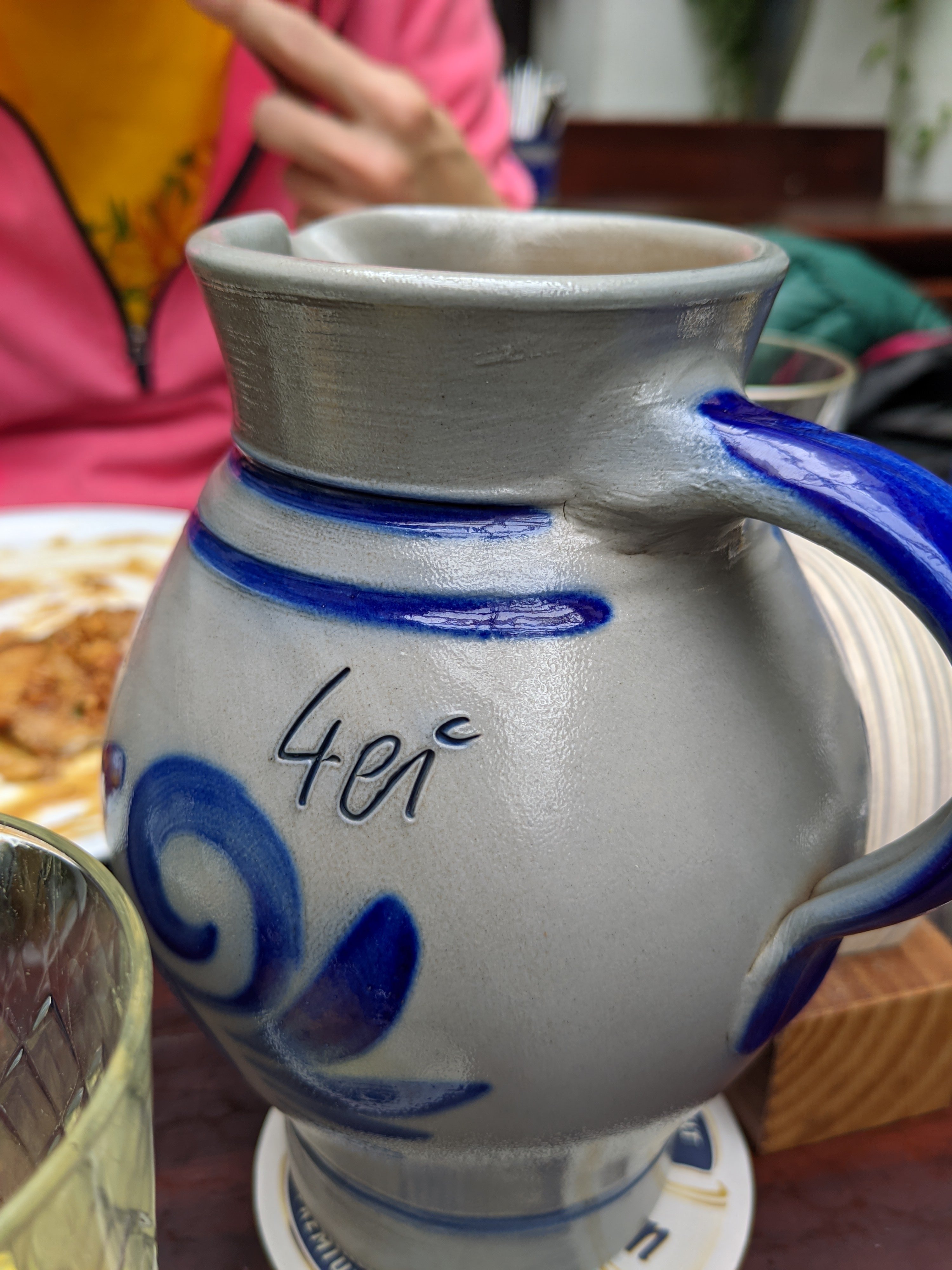Questions: what are the perks to using this vs a pour over system (which is what I currently use when I’m out of cold brew)? Is this easy to use if you have limited hand dexterity and strength?
Aeropress is more forgiving and produces more body. Pour over, being a percolation brew, will have higher extraction at the cost of being a bit more sensitive to technique.
Haven’t done a lot of pour over coffee, so my ideas might be inaccurate in that regard. I still use a moka pot from time to time, and have experimented with that enough to compare these methods to some extent. However, the AeroPress is my main method of choice.
control
Based on what I’ve observed, I think the key feature of an AeroPress is control. You can use any grind size, any extraction time, and any temperature below boiling. None of these variables are tied to one another in any way. With other methods, they are tied, so you will find yourself using one variable to control another, which isn’t ideal.
grind size and extraction time
With a pour over, you have to make the grind size big enough, or your paper will clog up. Clogged up paper will result in a long extraction time, which might not be what you want, so in a pour over you are essentially using grind size to put some limits to the extraction time. You can use coarse grind and pour very slowly to have more control over the result, but you can’t use fine grind and expect to have the same amount of control. Besides, pouring extremely slowly isn’t for everyone. With the AP, fine grind isn’t a problem, because you’ll be using the piston to push the water through the paper. Even if the paper is totally clogged up, because you used super fine Turkish grind, you can just push the water through anyway.
yield
Pour over method is still worth considering, because it allows you to irrigate the grinds with fresh water all the time, which maintains a high rate of extraction. However, you can also push that too far, which will result in bitter coffee. With the AP, it’s harder to screw up like that, because the grinds are constantly in contact with the water. Once enough has been extracted to the water, extraction rate will naturally slow down. That makes AP a more forgiving method. However, if you really want to maximize yield, pour over might be better for you.
temperature
Pour over and AP allow you to use whatever temperature you prefer, but the moka pot doesn’t. When the water is hot enough to produce steam, the pressure will begin to push the water through the grinds. High temperatures like that are good for efficient extraction, but they are also dangerously close to producing bitter coffee. It’s very easy to screw it up with the moka pot, whereas pour over and AP are far more forgiving in this regard.
strong coffee
I have never tried to make extra strong coffee with the pour over method, so I don’t really know how well that would work out. The moka pot and AP are really good at making strong coffee, although they can also be used for making normal strength as well. In this regard, they are quite flexible.
number of drinkers
The AP and moka pot have volume limitations, whereas a pour over allows you to just pour more and continue extracting. The AP is also ideal for making one normal cup at a time, but it can also be used for making 3-4 cups of strong coffee. The same philosophy also applies to the moka pot. Ideally, you would load the basket full and fill the water reservoir to make several cups of strong coffee - that’s what it’s designed to do. However, you can use less grinds to make normal coffee for a smaller number of people. The AP also allows you to make tiny experimental batches. This is really good if you want to compare different types of coffee, but you don’t want to drink too many cups. With the inverted method, you can easily make 100 ml batches instead and compare those with each other.
deleted by creator
I love the Aeropress. I don’t know if I’ve ever been able to make a bad cup with it. It seems so forgiving, yet you can really dial in a recipe at the same time.
My baseline recipe is 20g of coffee ground on the Encore (18 for light, 16 for med, 10 for espresso) and 200 ml water just off boil. Mix inverted for 2 min, stirring 3 or 4 times. Add 150 ml hot water in cold weather or right from the tap in hot water.
The only other brewer I bother with now is the OXO pour over, which is a good hands off brewer that makes me a very satisfying and consistent cup without the involvement of the Aeropress. It makes what it makes though. I use the same 20g coffee ground at 16-18, unbleached filters, and all 350 ml of water at once. I typically get evenly brewed grounds, but if I’m feeling so inclined I’ll check it’s getting all the coffee evenly, but whether I touch it or not, I feel I get the same result, so it’s more piece of mind than taste that is affected.
So what’s the benefit of an aero press over a French press? I’ve used the French press for years and I always see people loving aero press. I’m curious what the differences are.
Looks like they’re made of plastic, for starters.
It’s a great backup to have, that’s for sure. I drink mostly cold brew, but sometimes I run out and there are a few days before I brew more. Aeropress is a fantastic way to brew a quick cup.
Scientists found a way to make cold brew in a few hours just recently. It even passed every blind taste test, too. I forget the machine name, but it’s also commonly used to clean jewelry, as well as use in a lab, for like $60.
Edit: I went and found the old article, they used ultrasonic waves and it only took them 1-3 minutes depending on preference. Unfortunately after reading another article, it’s a modification they made to existing espresso machines. Their initial machine was around £15,000, and was overkill. Not sure how someone would be able to replicate at home. 🥲
Is that plastic? Gonna be a hard no for me Dawg
They’re working on a glass-and-metal premium version. But it’ll cost a premium price, though.
That would be amazing. The device is cool, and seemed to work well from the reviews, but the plastic prevented me from buying it.
It’s made of polypropylene, partially recycled, extremely durable, and again fully recyclable if it does reach end of life at some point. It’s also certified BPA free - as opposed to the very first version (that was transparent and used a different plastic). BPA doesn’t leech into water unless exposed over a very long time anyway, and the average brew time is about 3-5 minutes; but it’s good they made the change anyway. If I remember correctly, BPA became an issue mostly due to being in baby toys that are chewed on, or bottles for beverages with a very long shelf life (e.g. water, that practically lasts forever) where it can leech out over time.
To me it’s the ideal travel brewer, since I can pre-grind my coffee and keep it in a tin box, where I can also put a stack of filter papers in to keep them from getting wet. Glass just wouldn’t work on the road, the risk of damage is simply too high. And you’ll anyway need to have a plastic plunger, or at the very least a plastic coated one, since you need to have a 100% tight seal.
At home I don’t use it often since I have a decent espresso machine, but I can see the merit as a daily driver in a small kitchen.
Edit: Oh btw, if the body was made of glass, I can totally see how it would shatter someday while applying force. You have to push with quite a bit of power the water through.
Best lightweight coffee maker. The rubber goes after a time but you can buy replacements
I’ve kept the rubber plunger out of the tube when in storage. When kept inside the tube it compresses the rubber and retains the shape memory which causes it to fail. Haven’t ever replaced mine and it is eight years old. Still works perfectly.
My original one i had to do this but the one i have now, if you fully depress the plunger with no coffee in it it comes out the bottom just enough to not squeeze the sides.
Really? I have mine since probably 6 or 7 years and it’s still fine and I use it several times a week.
Mine died after 9 years or so. Did that thing where the rubber breaks down and gets super sticky and oily. Never had an issue with it losing its shape - you just have to make sure you store it fully pressed in so the lip pops out the far side of the tube
This entire thread is full of shills.
This contributes nothing to the conversation and comes off as conspiratorial.
Oh boy, a mug of hot plastic water. Yumm.
Mmmm…pfaaassss…!











